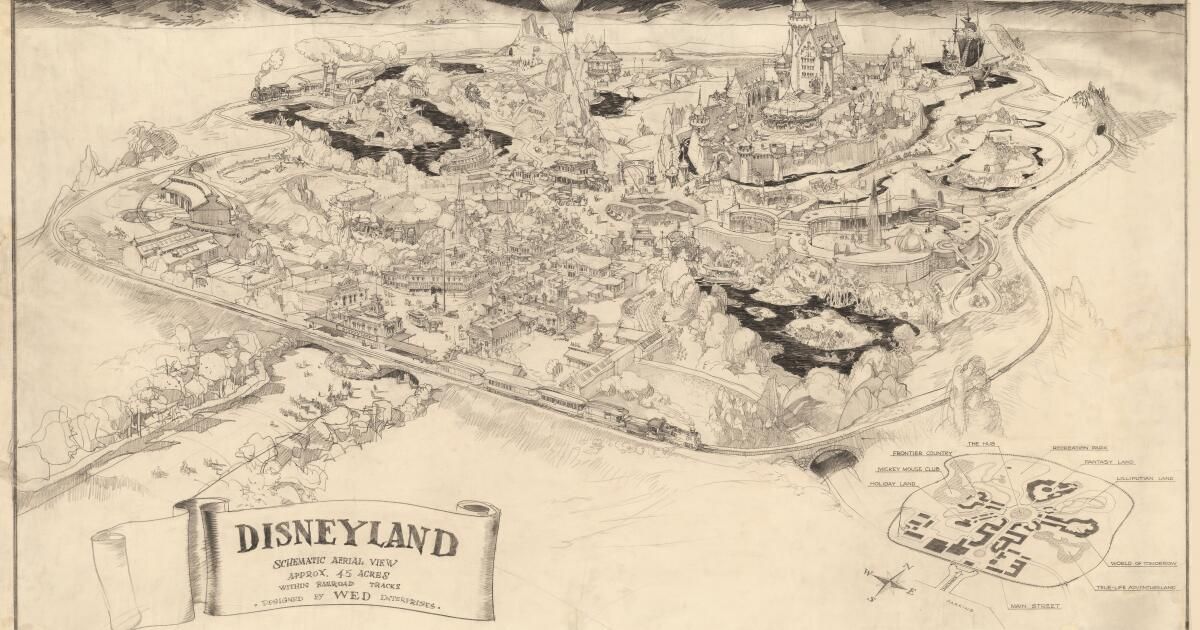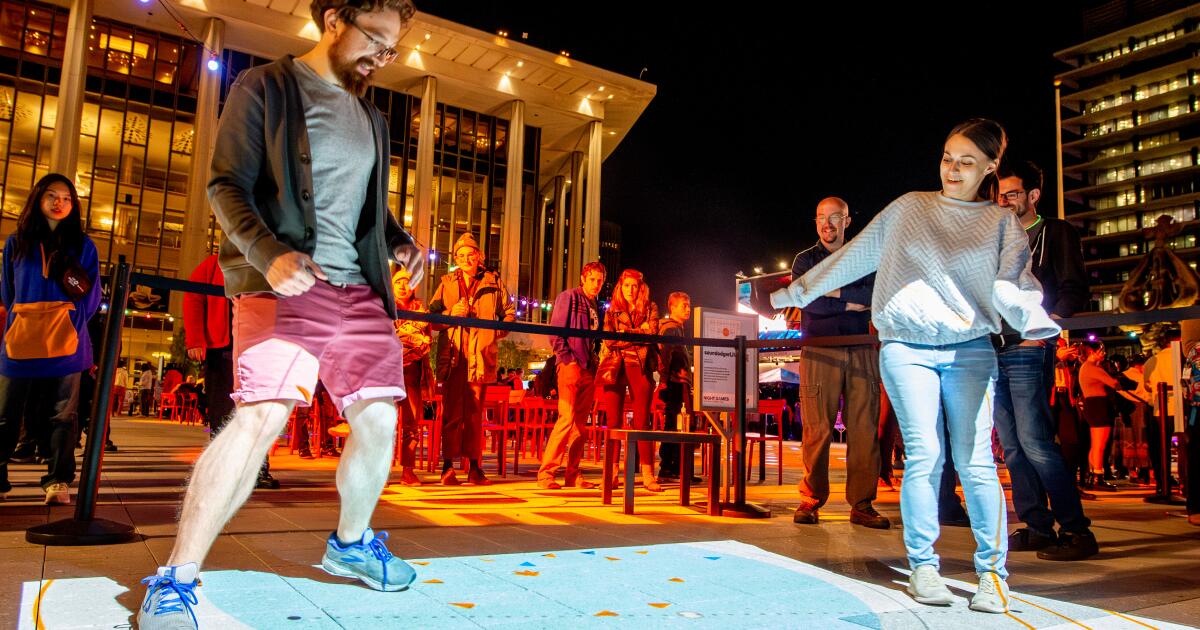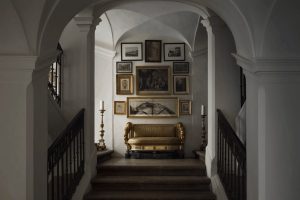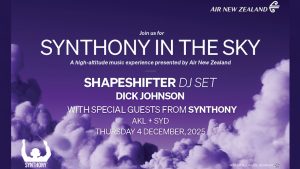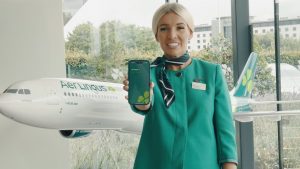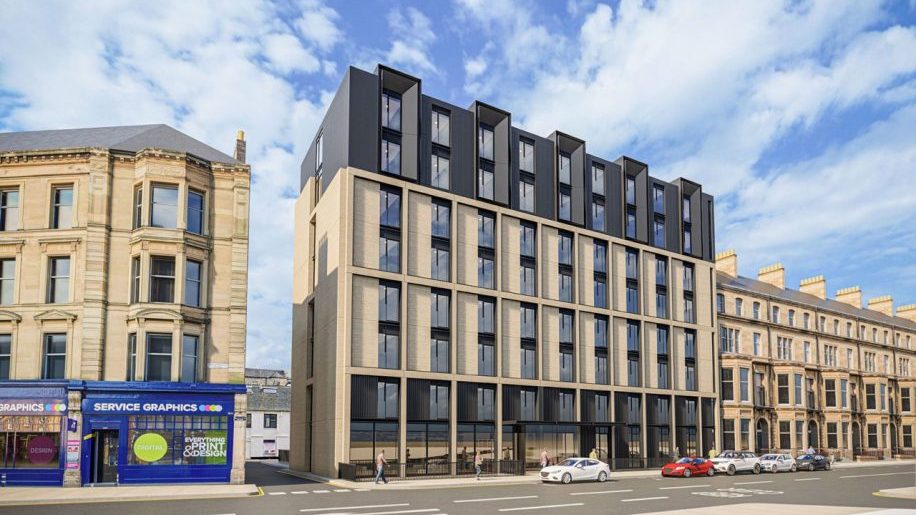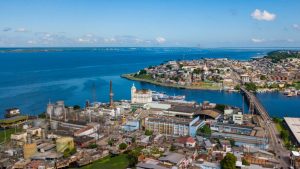There is a myth of Disneyland's creation of Disneyland: the artist and director of Animation Art Herb Ryman received 48 hours to draw an early map, very detailed and romantized the theme park, which would be used to help sell the project to investors. Although everything is true, Ryman's work, one of Disneyland's most famous and important drawings, was far from Disneyland's first map, as is often mentioned colloquially.
Ryman's work was, in fact, a kind of iteration, based on years of master planning of Walt Disney and the early collaborator Marvin Davis, a film art director responsible for much of the first Disneyland designs. Some works never seen before Davis and other Disneyland designers will be unearthed in the new book “The Happiest Place on Earth”, by the animated producer Don Hahn and the designer of themed parks Christopher Merritt. Both Hahn and Merritt have been transformed over the years in historians of the theme park, and the book will be launched on July 15 to coincide with the 70th anniversary of Disneyland.
“Marvin Davis said that while sitting there, probably in a room only in the studio with Walt standing on him pushing him on the shoulder, he made 133 reviews of these maps to reach Disneyland's design in 1955,” says Merritt. “Some of these maps have been shown before, but many of these have not seen each other before.”
The Walt Disney Imagineering archives, the secret division of the company responsible for the experiences of theme parks. In the files, multiple Marvin Davis maps were found that explore the Disneyland roots.
(Walt Disney Co.)
The book will track the development of Disneyland, starting in the early 50s when Disney flirted with the idea of placing the park next to Burbank, concepts drawn by Harper Goff, many of Davis' gradual advances in the shape of the theme park. Studying them and reveal how many of Disneyland's central ideas were in force in the early 1950s, although they were transformed. Alicia in Wonderland, for example, was once imagined as a journey attraction, which will be placed on the road from a archery in Fantasyland.
Hahn argues that many of the first seeds for Disneyland were planted during a 1948 trip that Disney and the animator Ward Kimball took to Chicago. There, the two attended the Chicago Railway Fair, which had, among their attractions, the recreations of Abraham Lincoln and a recreation of a border city.
“His first memorandum he did when he came to the house of the Chicago Railroad Fair was about trying to create these certain regions,” says Hahn. “If you look at the first bubank parks, there was a western town, there was a Stagecoach, there was a railway station, there was a Tom Sawyer -ish Island. Many of those things came from the railroad fair.”
And there was a lot of early experimentation and many discarded ideas. One of Merritt's favorite concepts was an exhibition of Tomorrowland dedicated to uranium hunting. The attraction has been referenced by Disney and others over the years as a “lost” attraction, but “the happiest place on Earth” will have a conceptual art never seen before the coats imagine Claude.
“Uranium Hunt was a strangely attraction to place himself in Tomorrowland, although Claude designed it with the rock work of the southwest,” says Merritt. “It was a bit of rock labyrinth out, and the idea was that they would give you, Geiger Counters, and there was going to be a true radioactive uranium embedded in the rock work that you would measure. In the end, they would give you a uranium of memories to take home with you, which is only crazy pants.”
Not all Disneyland's early ideas are so extravagant. What follows are some of the maps, and some early designs, which led to what would become Disneyland as we know it today.
The first sketches reveal an opera, general store and more

A Harper Goff Drawn concept for a Disney theme park in Burbank. It is believed that this was drawn in 1951.
(Walt Disney Co.)
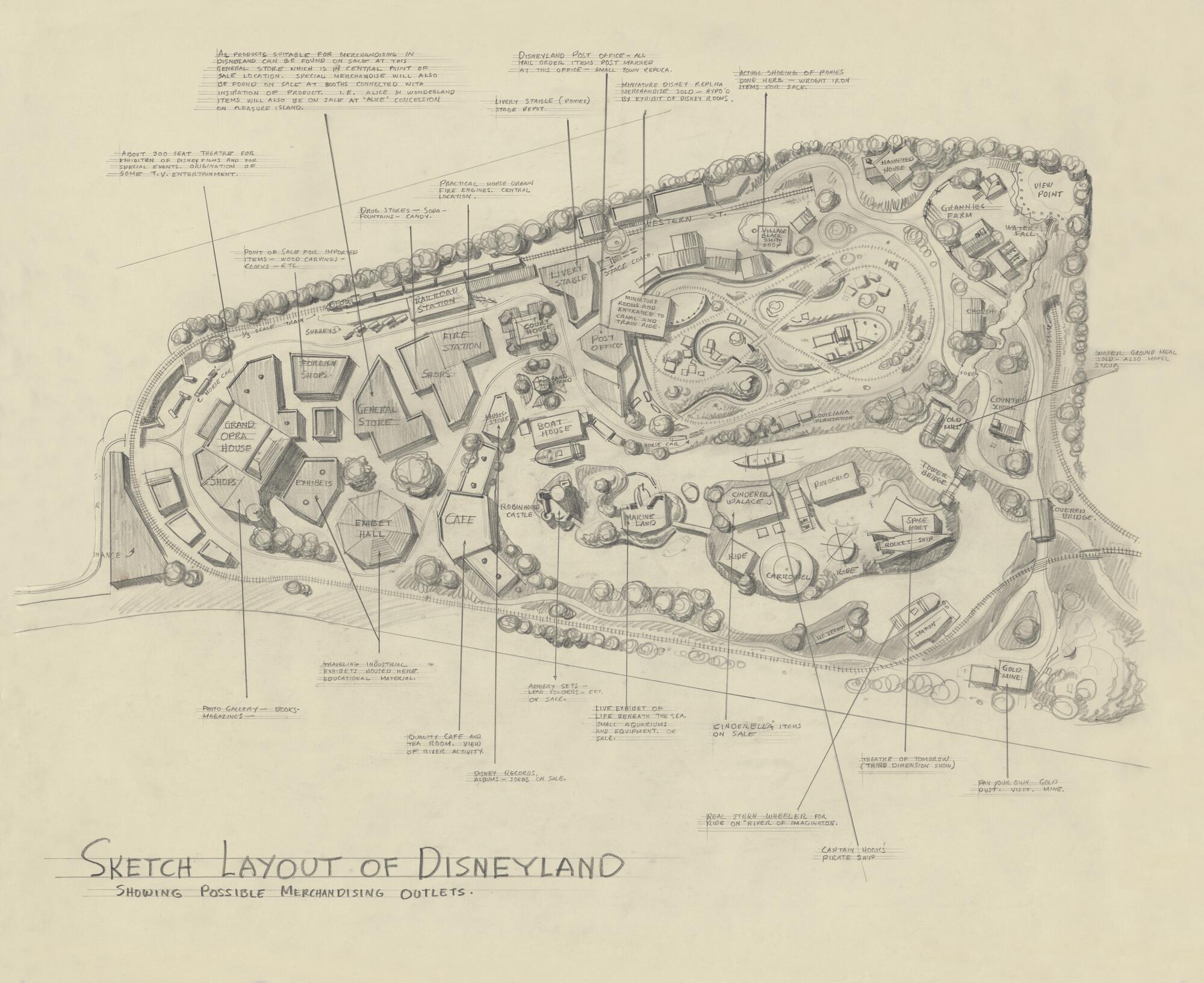
A sketch design of the early 1950s of Disneyland, focusing on marketing stores.
(Walt Disney Co.)
Disney first considered a theme park in front of his studies in Burbank, land that is today occupied by Walt Disney Animation Studios and the ABC headquarters of the West Coast. The idea, in its first conceptions, included much of what would later arrive in Disneyland: a train, a steamboat and less detailed versions of Main Street and Frontierland.
In particular, here is the second photo, unearthed in “the happiest place on Earth” for the first time. The approach is in the marketing locations, but those who study the image will spy on an opera and a general store, which is believed to be the first time such concepts appear. There is also a space port, a haunted house and a recreation of the Tower Bridge in London. It is said that stores are thematic to properties such as “Cinderella” and “Pinocchio”.
“It shows holistic thinking also, not only of attractions but also of commerce,” says Hahn. “Where the stores would be, where cafes would be, and a kind of guest experience mentality. That was a true innovation in the theme park, where Frontierland is transported on time, but food and costumes also add to Frontierland. You see the beginnings of that on a map like this.”
The beginnings of Frontierland and the Boats Tales Book of Channel Lands

An early map of Disneyland drawn by Marvin Davis. This map was probably drawn around 1953.
(Walt Disney Co.)
These first Davis Disneyland schemes begin to capture the idea of Disneyland's “center”, that is, a central area that leads Ay from its thematic spaces. There is a large theater space, which is believed to be designed with the hope that Disneyland becomes a television production store, and a significant plot dedicated to a river with surrounding attractions: the map requires a space for otters, as well as an area of the swamp.
The concept of Frontierland is still present, complete with a Pony ranch and a Stagecoach, as well as a haunted house and a land with the theme of miniatures, a concept that would finally become the Boats Land Canal Tales book. Merritt points out that this design is agnostic of the location, since Anaheim had not yet been decided for Disneyland.
In particular, here is an introductory land like a main street, USA, which leads to a central center. “These maps are revealing when you look at everyone in sequence,” says Merritt.
Davis's first maps also highlight a residential street with great Victorian houses. The second image, in particular, mentions a town hall and a church. Hahn and Merritt believe that this land was strongly influenced by the appearance of the “lady and vagabond.”
Main Street begins to materialize
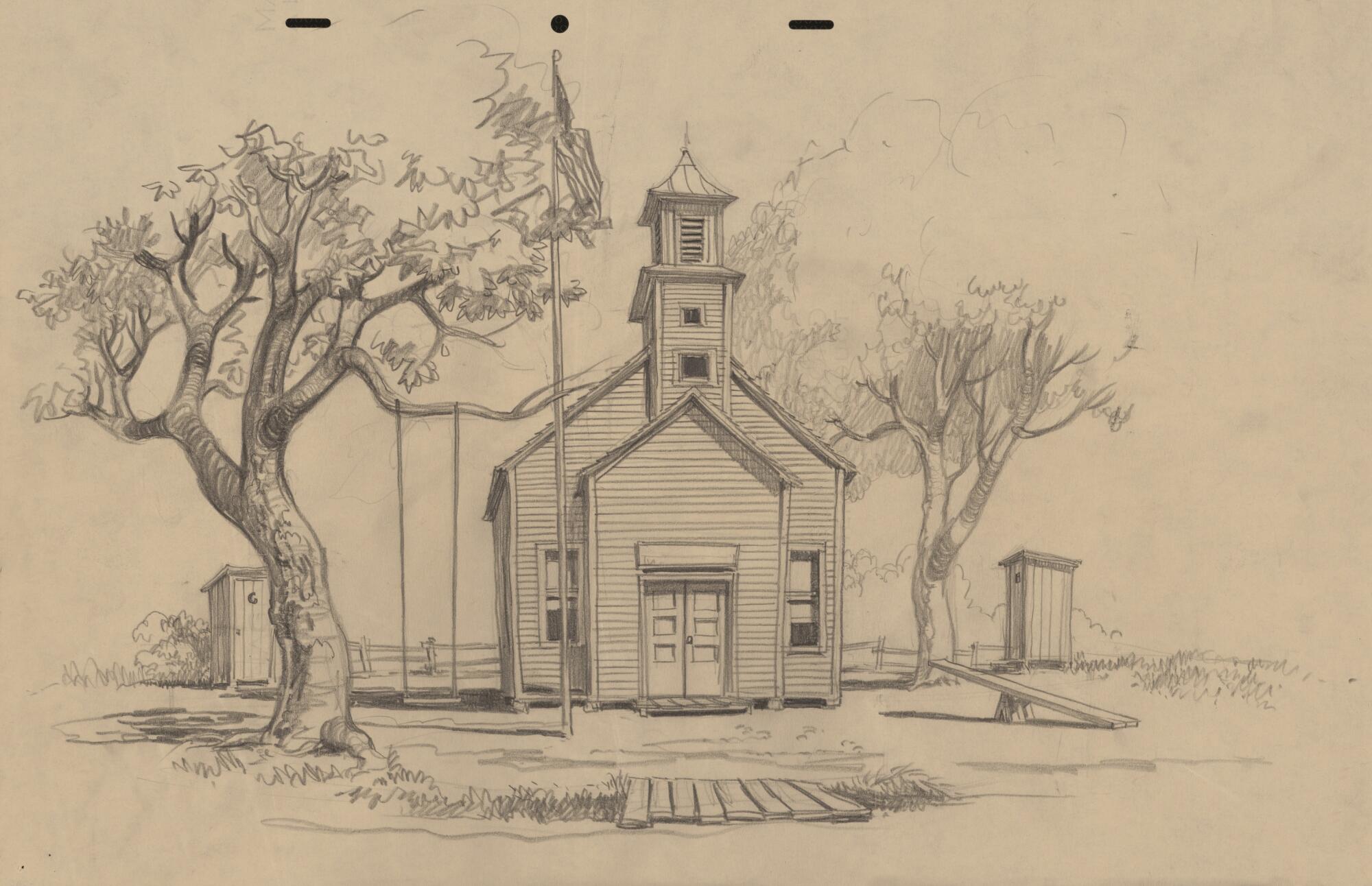
An early Harper Goff design that influenced Frontierland's appearance.
(Walt Disney Co.)
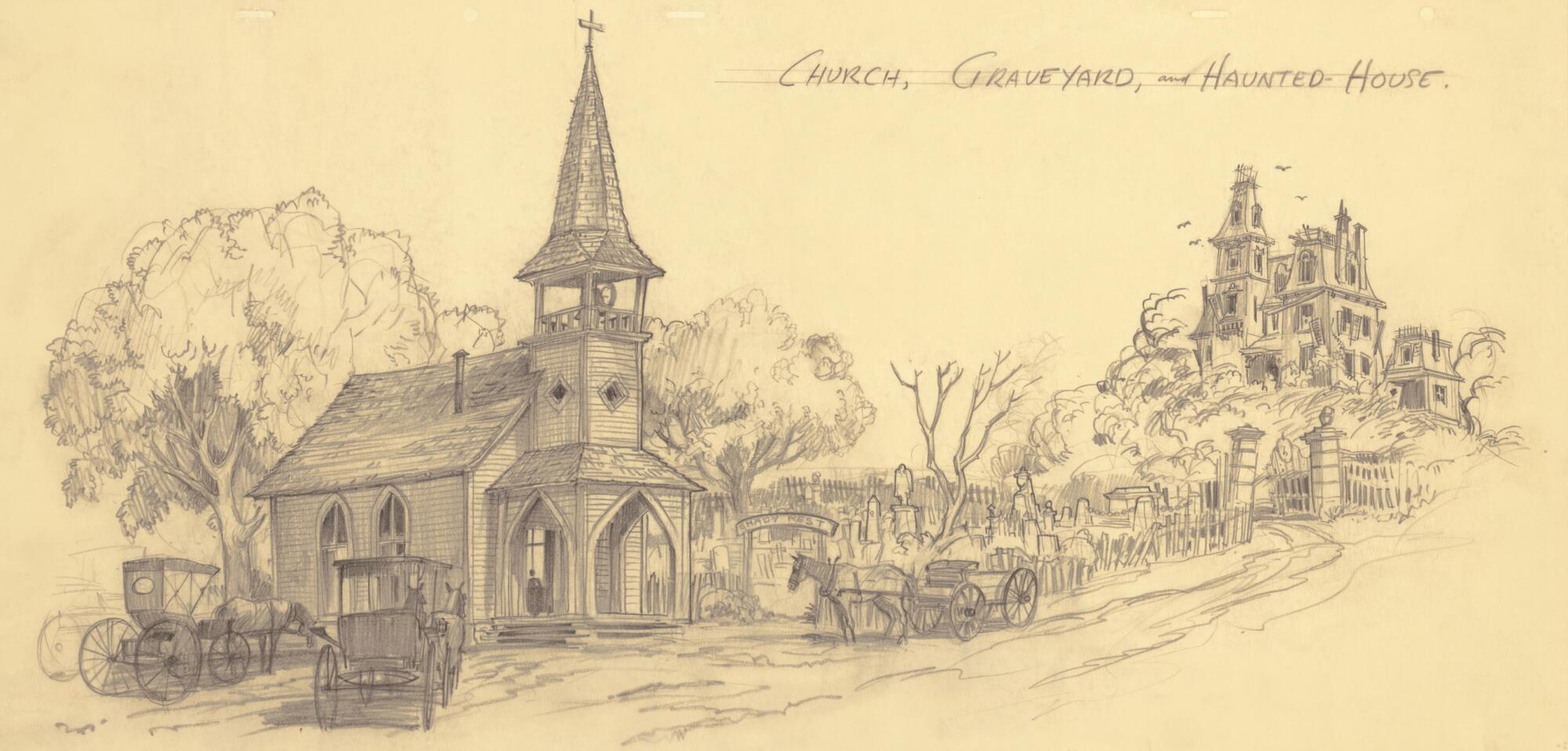
Some early Harper Goff designs for what would become Disneyland.
(Walt Disney Co.)

Disneyland's early conceptual art of Harper Goff
(Walt Disney Co.)
These, says Merritt, are Harper Goff's 1951 selection drawings. The work is exploratory, since it could have imagined for several parts of the park. While Goff's impact on Frontierland is well documented, and has notes, perhaps, an influence of the ghost city of Knott's Berry Farm in these images, it is also believed that some of these designs were kicked as a potential concept of the main street, USA.
Main Street, says Hahn, is often observed that he is largely influenced by Disney's time when he was a child in Marceline, Missouri. While that does not doubt these days between the Disney fans base, Hahn says that the theory was not immediately arrived. He points out that part of Goff's early conceptual work has a slight Victorian inclination, which Goff drew both “Lady and The Tramp” and his own childhood.
“It really is anyone's childhood,” says Hahn about Main Street. “It is an idealized America. Goff grew up in Colorado, and many of these are his victorious memories of his hometown of Colorado. These are scenario designers that carried their chops from movies to Disneyland.”
Welcome to the Park destination: Anaheim
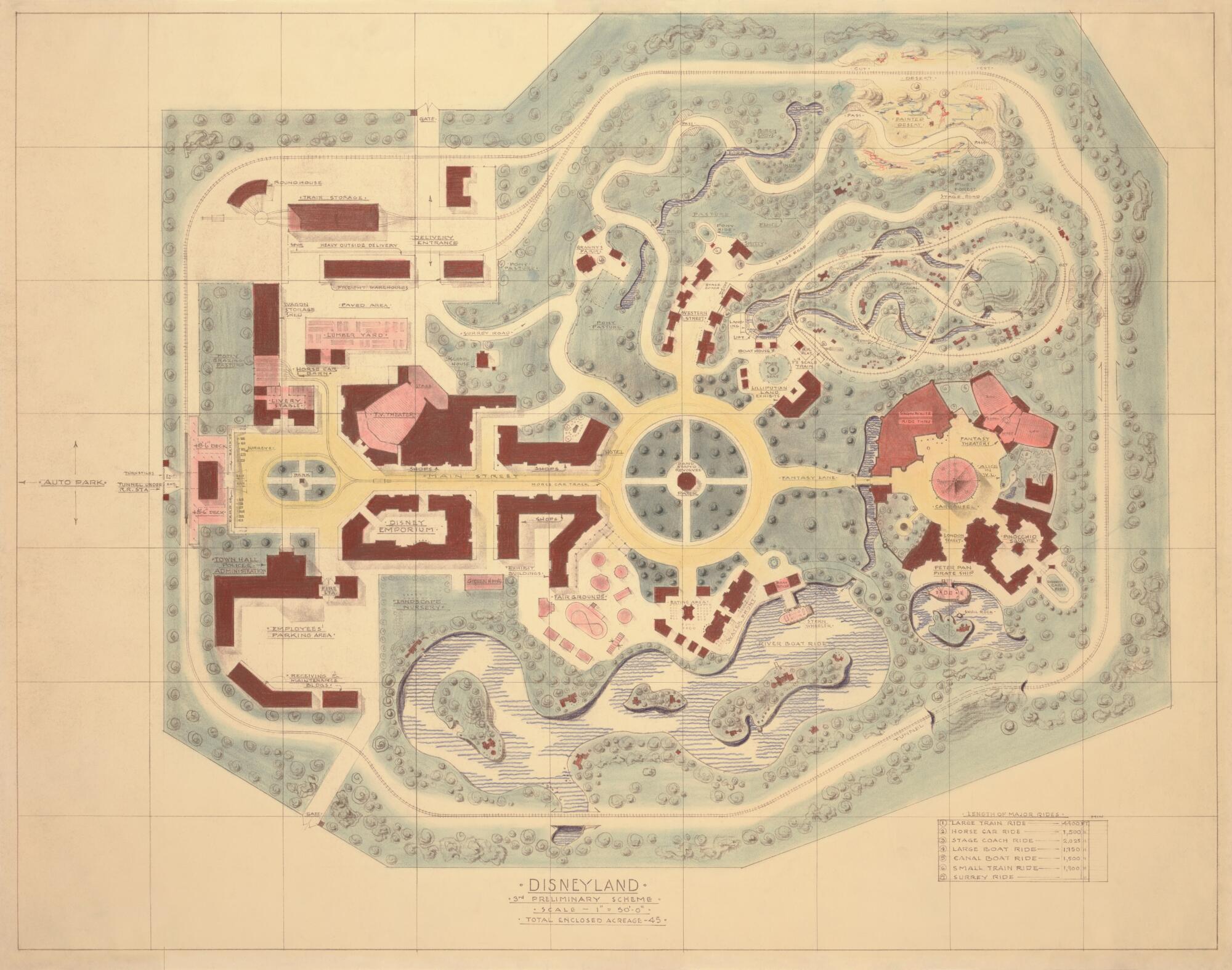
A fundamental map of Disneyland, drawn by Marvin Davis.
(Walt Disney Co.)
Merritt and Hahn believe that this third early scheme of Disneyland from Davis, the drawing is without date, is perhaps the first to imagine Anaheim as the fate of the park. The image only needs to be rotated and you can see many of the pieces that include the park: a main street, a central center and, for the first time from the drawings of Goff, of the Burban Park, a train that surrounds the land.
About, and one will see that there is a great “emporium” to greet the guests, and buyers, in Main Street, USA, as well as a castle -shaped pit to mark the entrance to Fantasyland. Television production spaces are still present at the front of the park, and the map lists a large number of attractions, which include a horsepower carriage, train walks and boat walks.
Maps begin to show Disneyland's attractions that we know today

An autumn map of 1953 by Disneyland by Marvin Davis.
(Walt Disney Co.)

A September 1953 map by Marvin Davis.
(Walt Disney Co.)

A September 1953 map by Marvin Davis.
(Walt Disney Co.)
These three Davis maps are from September 1953, made with only days of difference. The lower drawing is a bit more simplified, since it was designed to show yourself to television and financial networks. One can see a trip inspired by the “true adventures” of Disney on the right side of the park. Ultimately, this would become the jungle cruise and bow to the left side of the park.
The three maps, however, were fundamental in Disneyland's final design, imagining Anaheim as the last destination. It is noteworthy that in the image of the medium there is a land of recreation, home of a ball field, a mini golf course and a music kiosk. At this time, Disneyland still imagined as a circus accommodation, a concept that was explored in the Royal Park after opening, but was soon ruled out. However, Fantasyland, a land of tomorrow, Frontierland and what would become Adventureland are present.
Fantasyland is home to these drawings to the attractions with the theme “Snow White and the Seven Dwarfs”, “Peter Pan”, “Alicia in Wonderland”, Pinocchio “(denoted as a pleasure island) and” Fantasia “. It is also present what would become a highway, which means that Disneyland at the end of 1953 had many of its first solidified attractions.
Merritt says: “You will want your magnifying glass to look at some of these things.”

